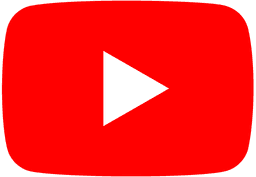Mastering Image Segmentation with Detectron 2: A Step-by-Step Tutorial
TechnologyArtificial IntelligenceLearn how to achieve accurate image segmentation and annotation using pre-trained models in Detectron 2. This comprehensive tutorial provides instructions on loading images onto Google Colab, defining classes for annotation, visualizing annotations, training the model, applying segmentation, and analyzing image data.
Image Segmentation and Annotation
⭐Demonstration of loading images onto Google Colab for image segmentation using Mask R-CNN.
🔍Instructions for zooming in and using click and drag to annotate images.
🎨Ability to cycle through different colors for annotation.
🖥️Changing the runtime to GPU for proper usage and installing Detectron 2 on Google Colab.
📊Visualizing and confirming annotations in a training dataset and storing annotations in a Json file format.
Model Training and Segmentation Results
🚀Starting the training process and understanding the model instantiation.
📸Creating a predictor object for applying segmentation on images and showcasing the segmentation results.
💡Highlighting the detection of mitochondria in the segmented images and saving the results in the output directory.
📊Analyzing image data by manually counting objects and importing data into Python for further analysis.
⚙️Detecting and saving individual cells and mitochondria for 3D reconstruction and morphology analysis.
FAQ
How long does the training process take to complete?
The training process takes about 6 minutes and 54 seconds to complete.
Can the model be loaded from a pre-trained model or trained from scratch?
If resume is false, the model is either loaded from a pre-trained model or trained from scratch.
What is the process for visualizing and confirming annotations in a training dataset?
The annotations are stored in a Json file format and associated with the corresponding image file names for verification.
How can image data be analyzed after segmentation?
Image data can be analyzed by manually counting objects and importing data into Python for further analysis, including determining the average number of objects per image for each class and the average area of objects.
What can be done with the detected individual cells and mitochondria?
The detected cells and mitochondria can be reconstructed in 3D for further analysis and morphology extraction.
Summary with Timestamps
Browse More Technology Video Summaries

Unveiling the Magic of Rabbit R1: A Comprehensive User Experience Review

TrueNAS Scale Dragonfish 24.04: A Comprehensive Overview and Upgrade Guide

Unlocking the Potential of Ripple XRP: Insights from 2014 and Beyond

Hisense U8N Review: Is it Worth the Hype?

Nothing Phone 2: The Ultimate Review in 2024

Unlocking the Power of AI: A Deep Dive into NVIDIA GTC
Learn how to achieve accurate image segmentation and annotation using pre-trained models in Detectron 2. This comprehensive tutorial provides instructions on loading images onto Google Colab, defining classes for annotation, visualizing annotations, training the model, applying segmentation, and analyzing image data.


Popular Topics